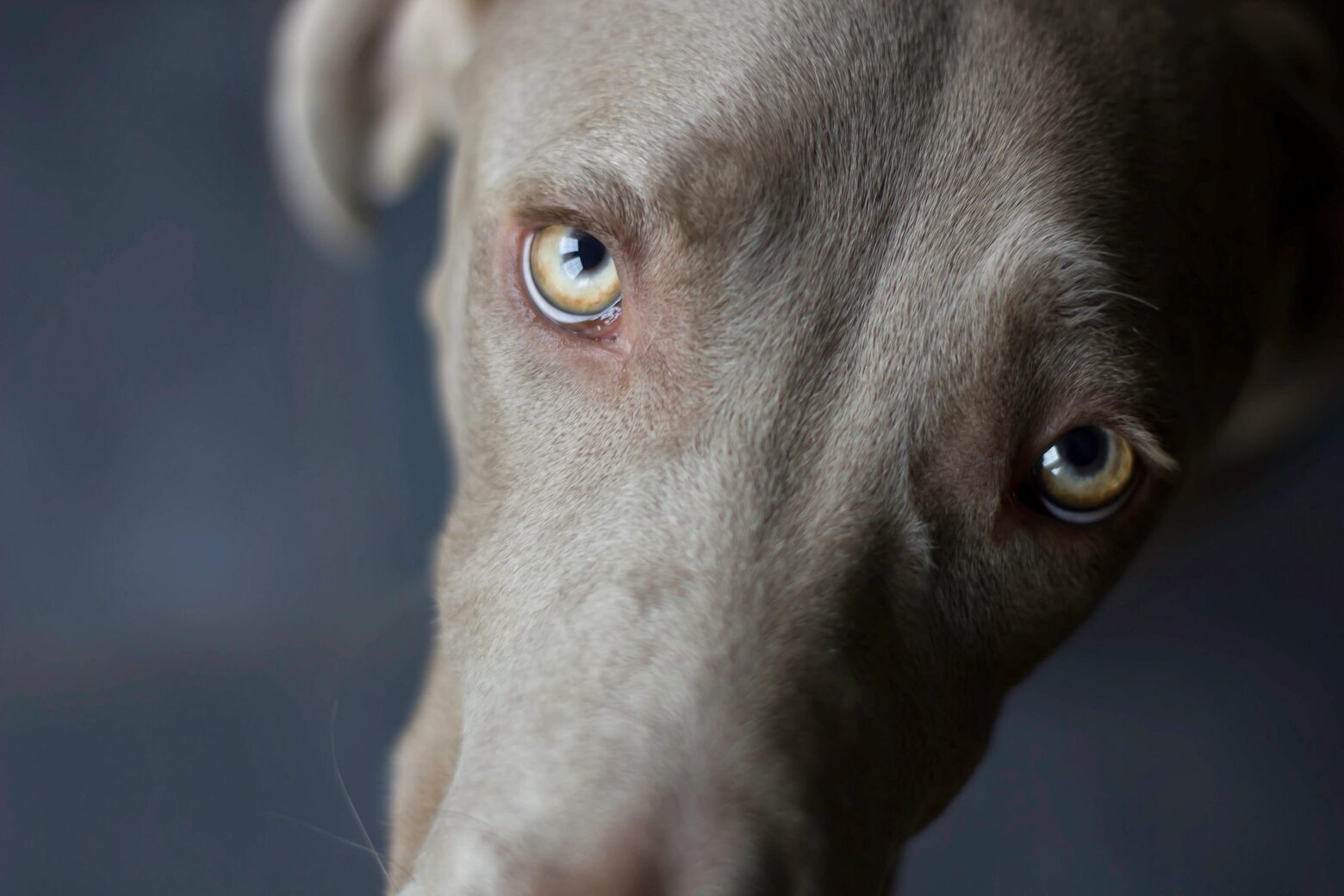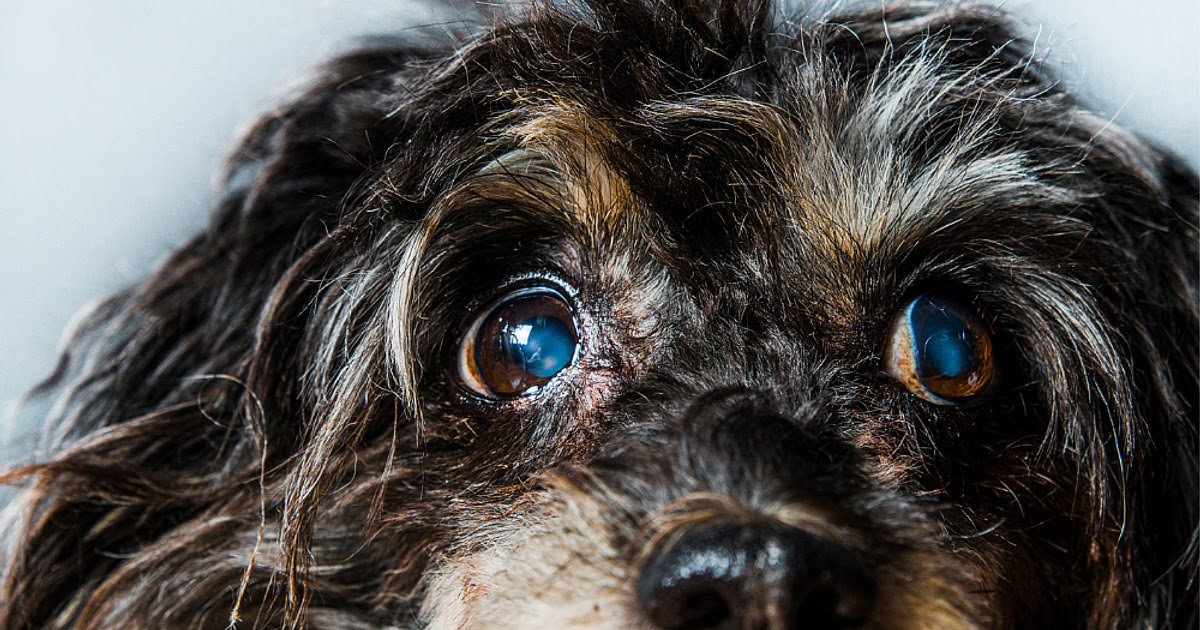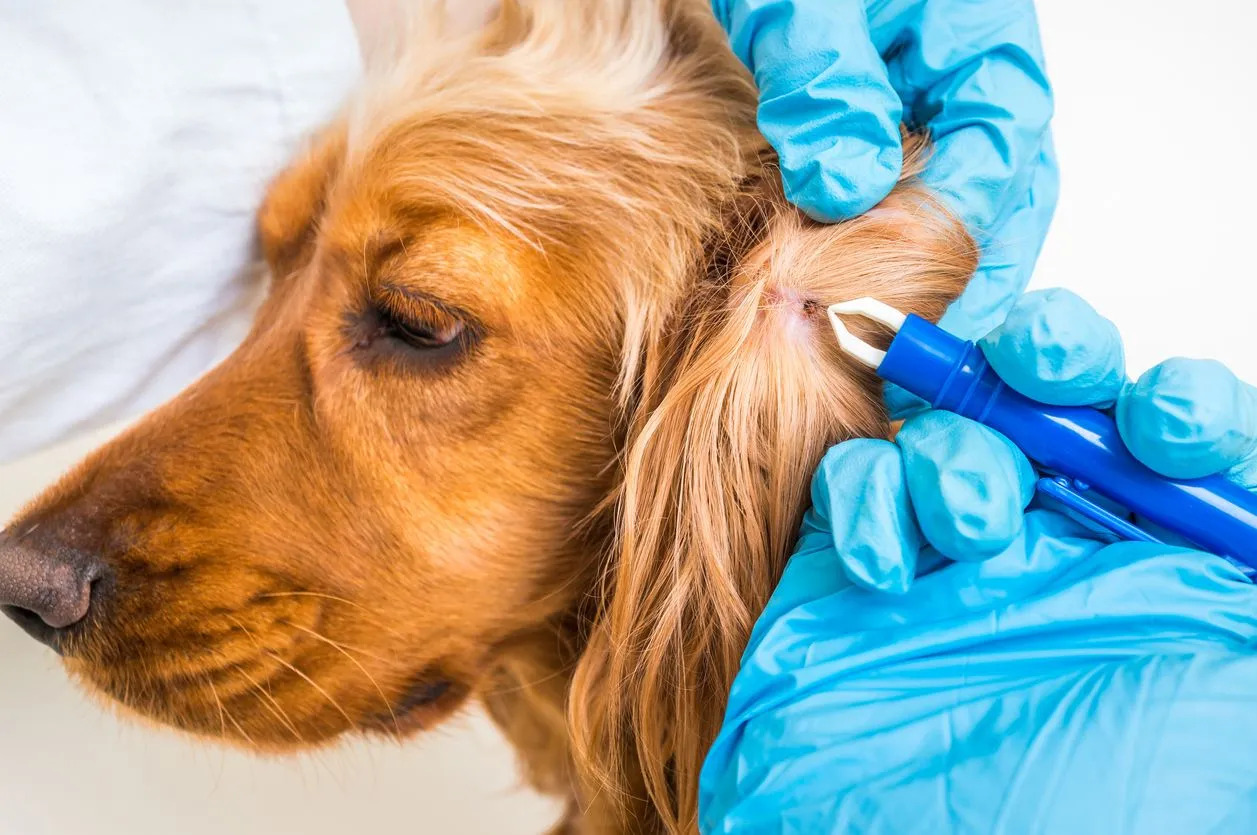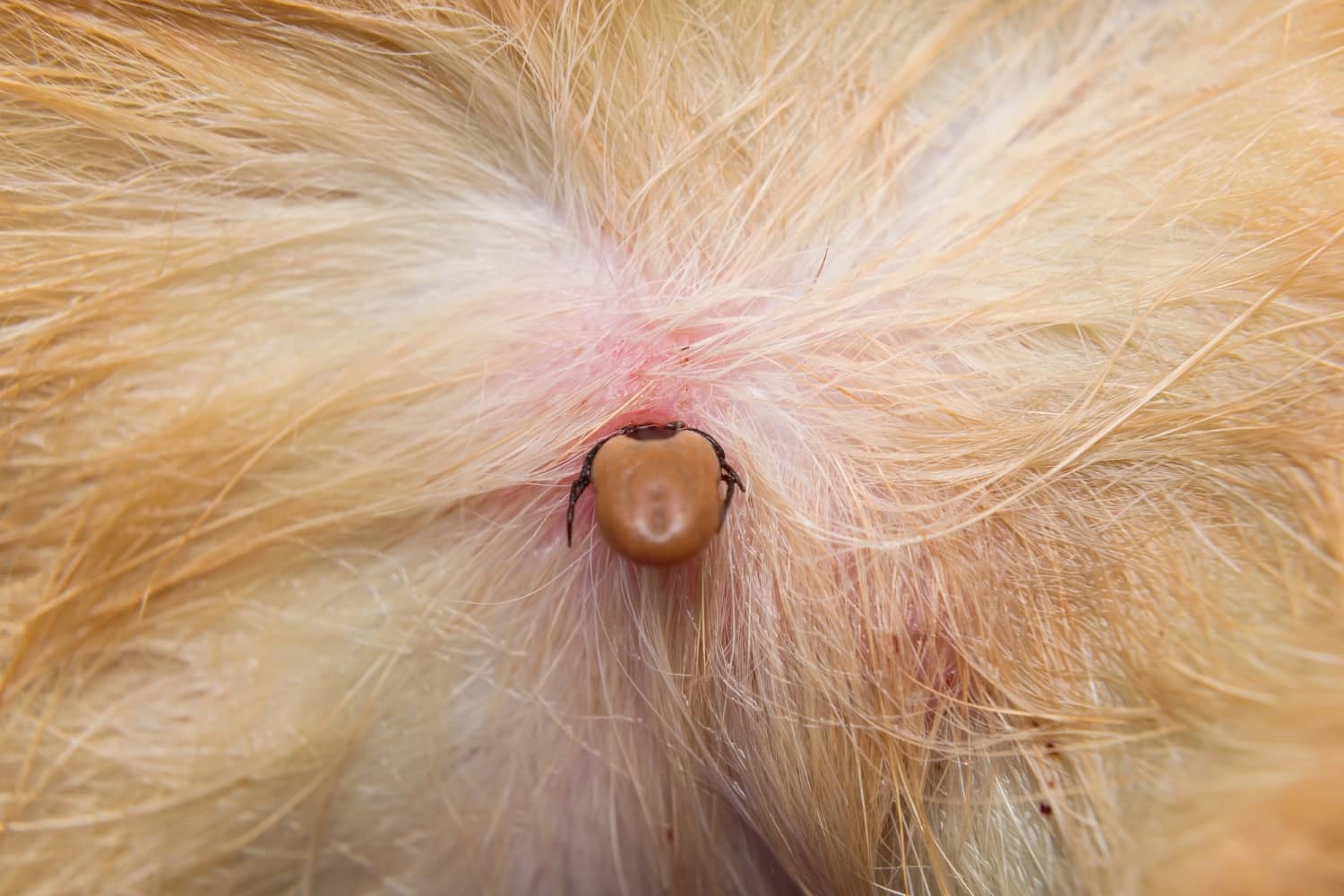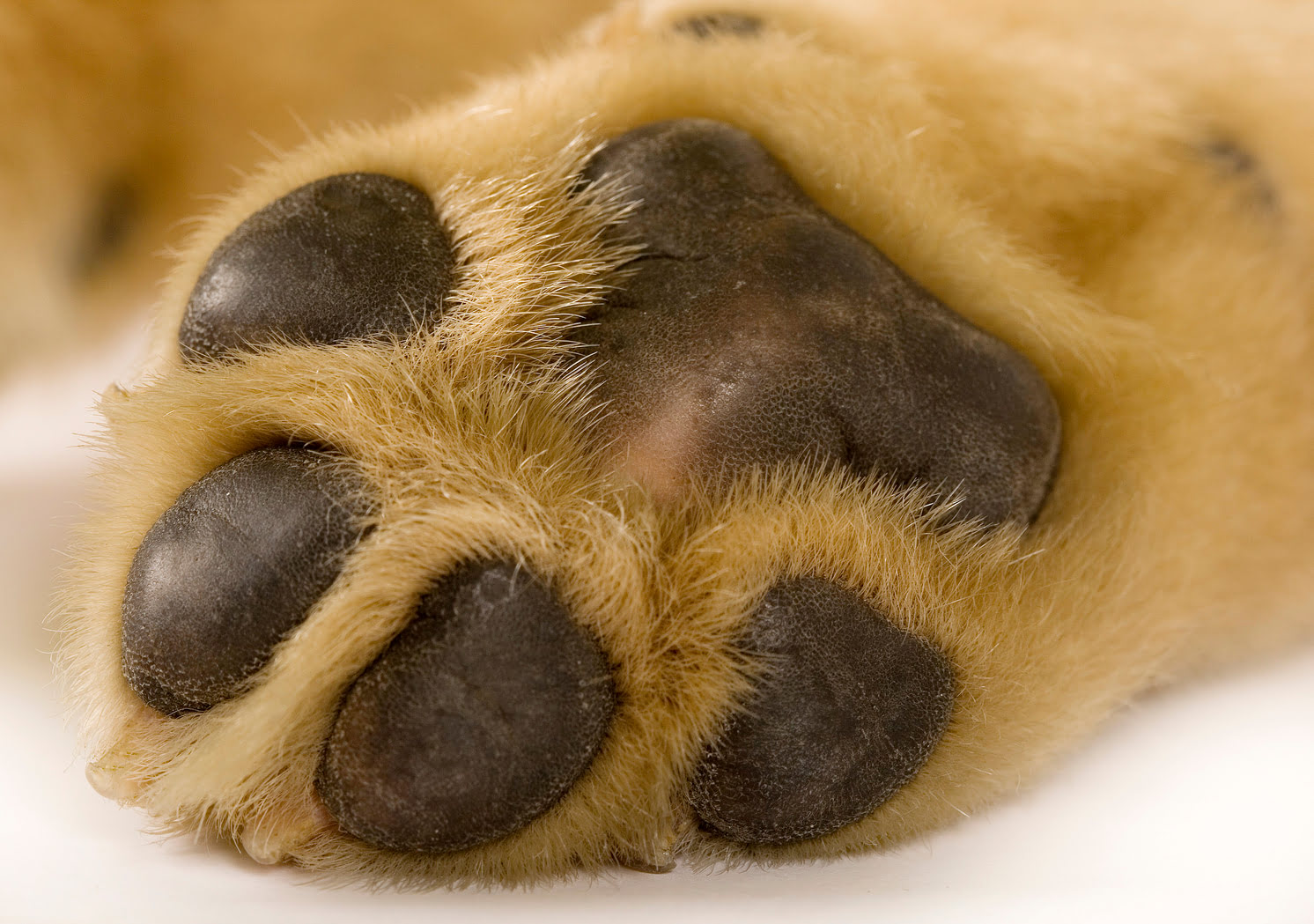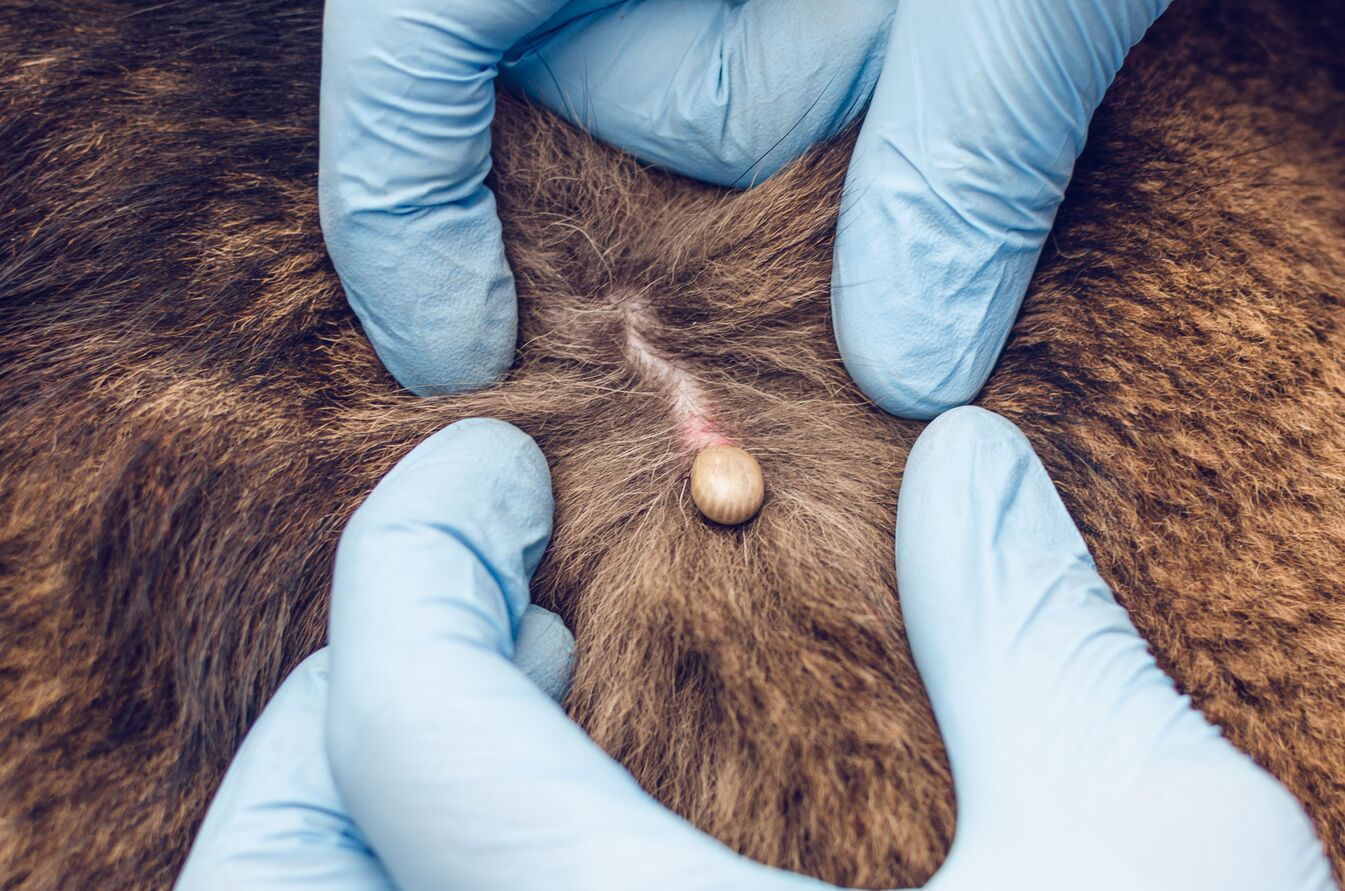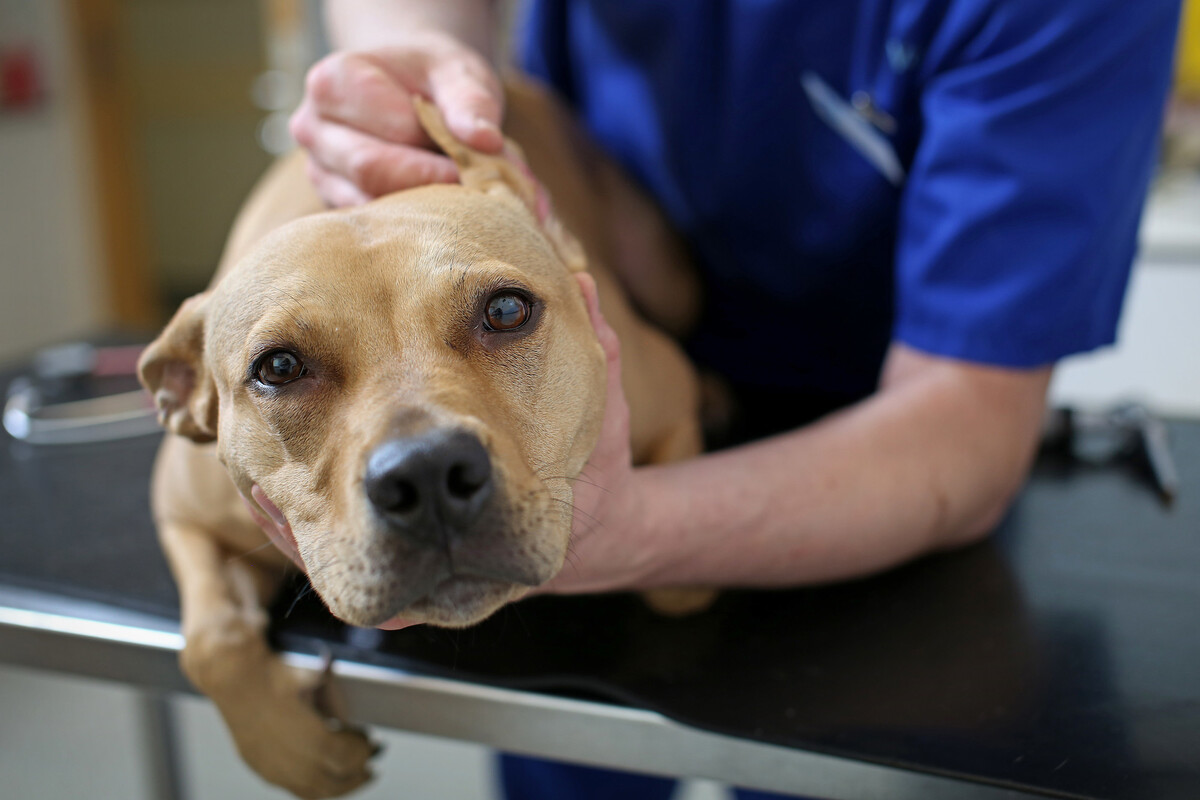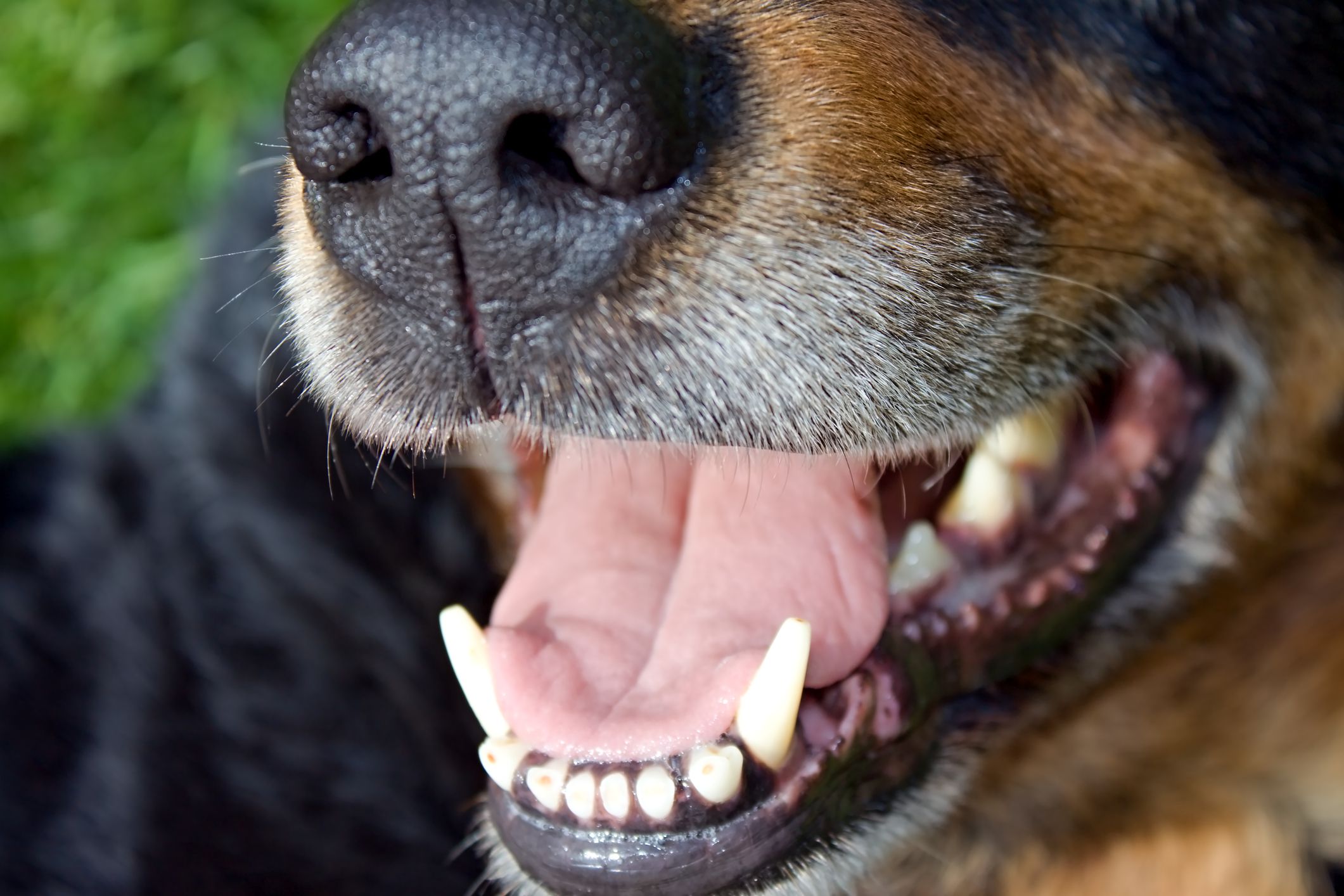Home>Health & Wellness>Common Health Issues>What Do Fleas Look Like On My Dog?
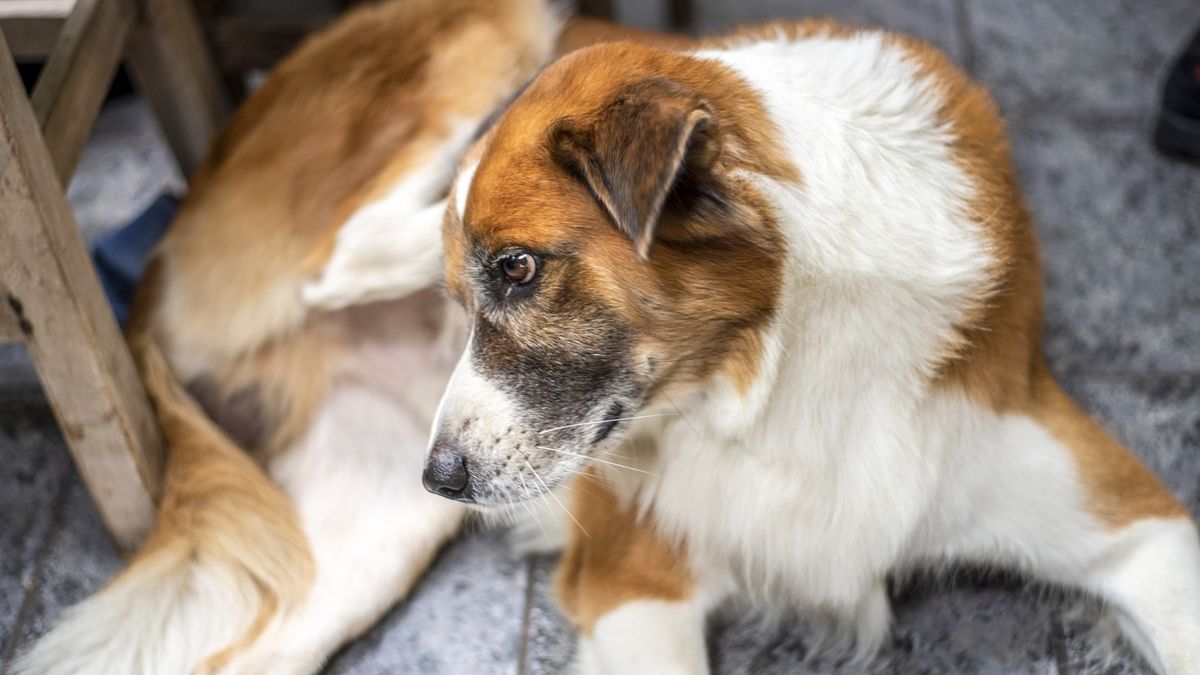

Common Health Issues
What Do Fleas Look Like On My Dog?
Modified: February 21, 2024
Learn about common health issues in dogs and what fleas look like on your pet. Understand the signs and symptoms to keep your furry friend healthy.
(Many of the links in this article redirect to a specific reviewed product. Your purchase of these products through affiliate links helps to generate commission for Pawsomeoldies.com, at no extra cost. Learn more)
Table of Contents
Introduction
Fleas are tiny, wingless insects that are notorious for causing discomfort to our beloved canine companions. These pesky parasites thrive by feeding on the blood of dogs, leading to itching, irritation, and potential health issues. As a responsible pet owner, it's crucial to understand the physical characteristics of fleas, their life cycle, and the signs of infestation. By gaining insight into these aspects, you can effectively check for fleas on your dog, implement appropriate treatment, and take preventive measures to safeguard your furry friend's well-being.
Understanding the appearance and behavior of fleas is essential in identifying and addressing potential infestations. Additionally, being aware of the signs of flea presence and the methods for checking your dog for these parasites will enable you to take prompt and effective action. Furthermore, learning about the treatment and prevention of fleas is vital for maintaining your dog's health and ensuring a comfortable and happy life for your pet.
In the following sections, we will delve into the physical characteristics of fleas, their life cycle, signs of infestation on your dog, methods for checking for fleas, and effective treatment and prevention strategies. By exploring these topics, you will gain valuable knowledge to protect your dog from the nuisance and potential health risks associated with fleas. Let's embark on this insightful journey to equip ourselves with the necessary tools to keep our furry companions free from these bothersome pests.
Read more: What Do Ticks And Fleas Look Like On Dogs
Physical Characteristics of Fleas
Fleas, scientifically known as Siphonaptera, are minuscule, wingless insects that possess remarkable physical attributes enabling them to thrive as ectoparasites. Measuring about 1 to 2.5 millimeters in length, these agile pests are equipped with specialized features that facilitate their parasitic lifestyle. Their flattened bodies, which are laterally compressed, allow them to effortlessly navigate through the dense fur of their host, making them adept at evading detection.
The distinct physical characteristics of fleas include their robust hind legs, which are designed for remarkable feats of jumping. These powerful legs enable fleas to propel themselves up to 150 times their body length horizontally and 200 times vertically, allowing them to swiftly move between hosts or escape potential threats. Additionally, their dark brown or reddish-brown exoskeletons are covered in microscopic spines, providing them with a resilient and protective outer layer.
One of the most notable features of fleas is their mouthparts, which are adapted for piercing and sucking. These specialized mouthparts allow fleas to puncture the skin of their host and feed on their blood. Furthermore, fleas are equipped with sensory antennae that aid in locating hosts and detecting environmental cues, contributing to their survival and reproductive success.
Understanding the physical characteristics of fleas is crucial for identifying and addressing potential infestations. By recognizing these distinctive traits, pet owners can effectively differentiate fleas from other common pests and take appropriate measures to safeguard their dogs from these troublesome parasites. With this knowledge, pet owners can remain vigilant and proactive in protecting their furry companions from the discomfort and health risks associated with flea infestations.
Flea Life Cycle
The flea life cycle encompasses four distinct stages: egg, larva, pupa, and adult. Understanding this intricate life cycle is essential for comprehending the resilience and persistence of flea infestations.
The life cycle begins when adult female fleas lay eggs on the host animal, which then fall off into the surrounding environment. These tiny, oval-shaped eggs are barely visible to the naked eye and can be found in the pet's bedding, carpets, upholstery, and outdoor areas frequented by the animal. In optimal conditions, such as warm and humid environments, the eggs hatch into larvae within 1-10 days.
The flea larvae, which are legless and translucent, undergo several molting stages as they feed on organic debris and flea feces in the environment. This stage typically lasts for 5-11 days, after which the larvae spin cocoons and enter the pupal stage.
Within the protective cocoon, the flea pupae undergo metamorphosis, eventually emerging as adult fleas. The pupal stage can last anywhere from 7 days to several months, with the ability to remain dormant until favorable conditions prompt emergence. This dormancy allows pupae to survive in the environment, making them resilient to traditional pest control measures.
Once emerged, adult fleas seek out a host for a blood meal to initiate the reproductive cycle. Female fleas can lay hundreds of eggs during their lifespan, perpetuating the infestation cycle. This continuous reproductive process contributes to the persistence of flea populations, making them a formidable challenge to eradicate.
Understanding the flea life cycle is crucial for effective flea control and prevention. By targeting multiple stages of the life cycle through integrated pest management strategies, pet owners can disrupt the reproductive cycle of fleas and mitigate infestations. Implementing measures such as regular vacuuming, washing pet bedding, and using veterinarian-recommended flea control products can help break the life cycle and protect pets from the discomfort and health risks associated with flea infestations.
Signs of Fleas on Your Dog
Identifying the signs of fleas on your dog is crucial for timely intervention and effective flea control. These persistent parasites can cause a range of discomforting symptoms in dogs, indicating their presence and necessitating prompt action. By recognizing these signs, pet owners can take proactive measures to address flea infestations and alleviate their pet's distress.
-
Excessive Scratching and Itching: One of the most common signs of fleas on dogs is incessant scratching and itching. Flea bites can trigger allergic reactions in dogs, leading to intense itching and discomfort. Observing your dog excessively scratching, biting, or licking certain areas of their body, particularly the base of the tail, abdomen, and hindquarters, may indicate the presence of fleas.
-
Visible Fleas or Flea Dirt: Inspecting your dog's fur for the presence of fleas or flea dirt, which appears as tiny black specks resembling ground pepper, can provide direct evidence of infestation. Flea dirt consists of flea feces containing digested blood and is often found on the skin and fur of infested animals. When moistened, flea dirt may produce a reddish-brown stain, confirming the presence of fleas.
-
Hair Loss and Skin Irritation: Flea infestations can lead to hair loss, redness, and skin irritation in dogs. Persistent flea feeding and allergic reactions can result in dermatitis, causing inflamed, itchy skin and hot spots. Additionally, the presence of flea saliva can exacerbate skin irritation, leading to discomfort and visible signs of skin inflammation.
-
Restlessness and Agitation: Dogs infested with fleas may exhibit restlessness, agitation, and signs of discomfort. Flea bites can cause a sensation of constant irritation, prompting affected dogs to display restless behavior, including pacing, excessive grooming, and difficulty settling down. Observing such behavioral changes in your dog may indicate the presence of fleas.
-
Pale Gums and Flea Anemia: In severe cases of flea infestations, dogs may develop flea anemia due to significant blood loss from persistent flea feeding. This can lead to symptoms such as pale gums, weakness, and lethargy. Monitoring your dog's overall health and observing signs of anemia can provide critical insights into the severity of the flea infestation.
By remaining vigilant and attentive to these signs, pet owners can promptly address flea infestations and prioritize their dog's well-being. Seeking veterinary guidance for effective flea control and implementing preventive measures can help alleviate the discomfort and health risks associated with fleas, ensuring a happy and healthy life for your beloved canine companion.
How to Check for Fleas on Your Dog
Checking your dog for fleas is a crucial aspect of responsible pet ownership, enabling you to promptly identify and address potential infestations. Here's a comprehensive guide to effectively inspecting your dog for fleas:
Read more: What Do Parasite Eggs Look Like In Dog Poop?
1. Visual Inspection:
Begin by thoroughly examining your dog's fur, particularly in areas where fleas are commonly found, such as the base of the tail, abdomen, groin, and behind the ears. Look for any signs of movement or tiny dark insects darting through the fur. Additionally, part the fur to inspect the skin for flea dirt, which appears as small black specks resembling ground pepper.
2. Use a Flea Comb:
Utilize a fine-toothed flea comb to comb through your dog's fur, paying close attention to areas where fleas are likely to congregate. After each stroke, carefully examine the comb for any trapped fleas or flea dirt. The comb's fine teeth can capture adult fleas and flea dirt, providing tangible evidence of infestation.
3. Check for Skin Irritation:
Inspect your dog's skin for signs of redness, inflammation, or excessive scratching. Flea bites can lead to skin irritation and allergic reactions, causing discomfort for your pet. Identifying areas of skin irritation can indicate the presence of fleas and the need for prompt intervention.
4. Monitor Behavioral Changes:
Observe your dog's behavior for signs of restlessness, excessive grooming, or agitation. Dogs infested with fleas may display heightened discomfort, leading to behavioral changes such as constant scratching, licking, or restlessness. Monitoring these behavioral cues can provide valuable insights into potential flea infestations.
Read more: What Do Tick Images On A Dog Look Like
5. Seek Veterinary Guidance:
If you suspect or confirm the presence of fleas on your dog, it's advisable to seek veterinary guidance for effective flea control and treatment. Veterinarians can recommend suitable flea control products, provide guidance on environmental management, and address any potential health concerns associated with flea infestations.
By diligently checking your dog for fleas and remaining vigilant for signs of infestation, you can take proactive measures to safeguard your pet's well-being. Implementing regular flea checks and promptly addressing any signs of infestation will contribute to a comfortable and healthy life for your beloved canine companion.
Treatment and Prevention of Fleas
Effective treatment and prevention strategies play a pivotal role in managing flea infestations and safeguarding the well-being of dogs. By implementing comprehensive measures to address existing infestations and prevent future occurrences, pet owners can ensure a comfortable and healthy environment for their beloved canine companions.
Treatment Options:
-
Topical Flea Treatments: Utilizing veterinarian-recommended topical treatments, such as spot-on solutions or flea control sprays, can effectively target adult fleas on dogs. These treatments provide residual protection, killing existing fleas and preventing reinfestation for a specified duration.
-
Oral Flea Medications: Oral flea medications, available in chewable or tablet forms, offer systemic protection by disrupting the flea life cycle. These medications can eliminate adult fleas, inhibit egg production, and prevent larvae from developing into viable fleas.
-
Flea Shampoos and Dips: Bathing dogs with specialized flea shampoos and dips can provide immediate relief by eliminating adult fleas and soothing irritated skin. These products are particularly beneficial for dogs with acute flea infestations, offering a proactive approach to flea control.
-
Environmental Treatments: Addressing flea infestations requires comprehensive environmental management. Regular vacuuming, washing pet bedding, and treating indoor and outdoor areas with flea control products are essential for eradicating flea eggs, larvae, and pupae in the environment.
Prevention Strategies:
-
Regular Grooming and Flea Checks: Implementing a routine grooming schedule and conducting regular flea checks enable pet owners to promptly identify and address potential infestations. Thorough grooming practices, including combing and inspecting the dog's fur, contribute to early detection and intervention.
-
Use of Preventive Products: Proactive use of veterinarian-recommended flea preventatives, such as monthly spot-on treatments, oral medications, or flea collars, can effectively deter fleas from infesting dogs. These preventive products provide ongoing protection, minimizing the risk of infestation.
-
Environmental Maintenance: Maintaining a clean and hygienic environment is crucial for preventing flea infestations. Regular vacuuming, washing pet bedding in hot water, and minimizing outdoor exposure to flea-prone areas contribute to a flea-free living space for pets.
-
Regular Veterinary Care: Seeking regular veterinary care for dogs ensures comprehensive health assessments and guidance on flea control. Veterinarians can recommend suitable preventive products, assess the effectiveness of current flea control measures, and address any underlying health concerns associated with flea infestations.
By integrating these treatment and prevention strategies into their pet care routines, pet owners can effectively manage flea infestations and create a conducive environment for their dogs. Prioritizing proactive flea control measures and maintaining a vigilant approach to prevention contribute to the overall well-being and comfort of canine companions, fostering a harmonious and flea-free living environment.
